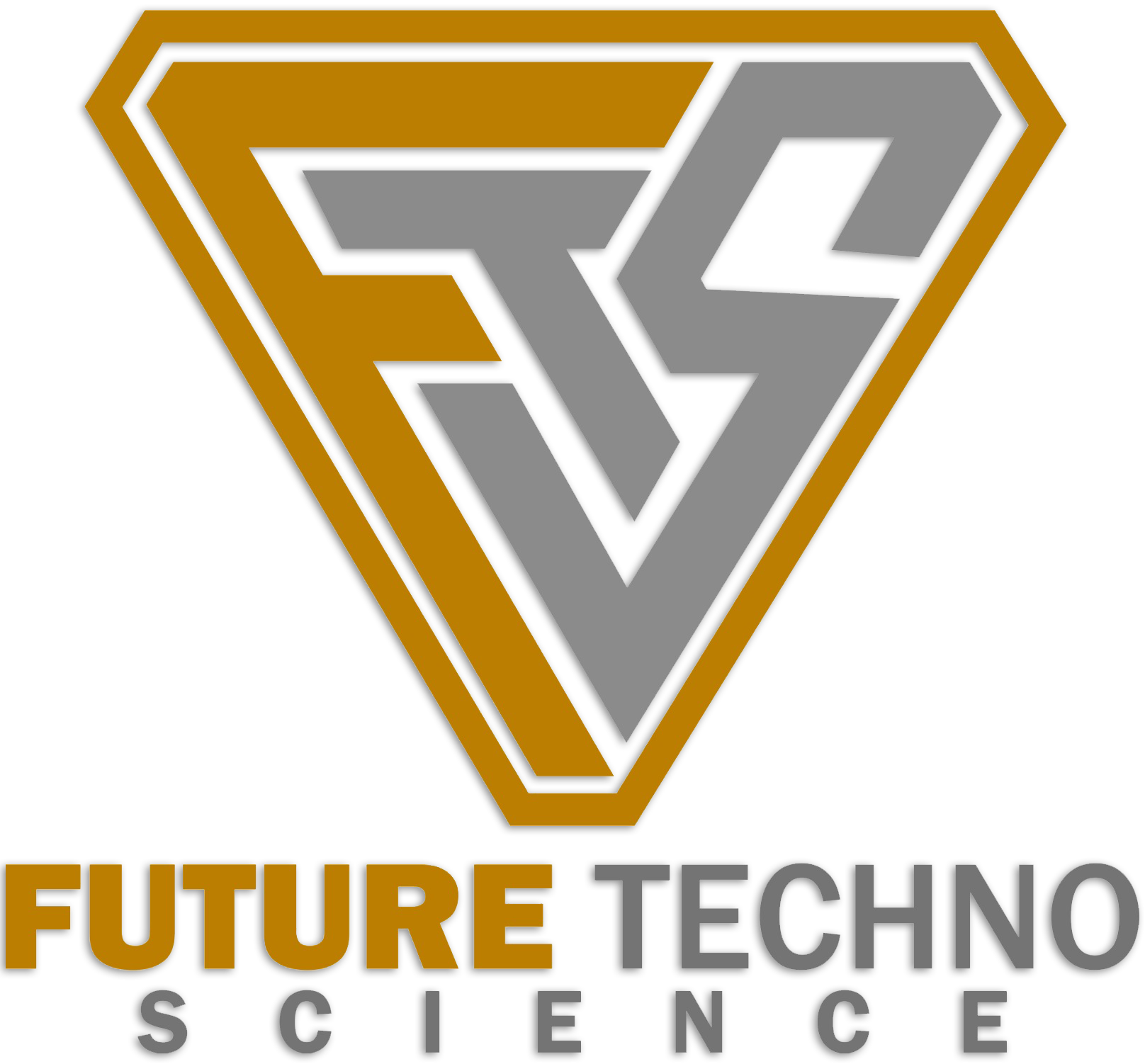Development of a Model to Classify Skin Diseases using Stacking Ensemble Machine Learning Techniques
DOI:
https://doi.org/10.62411/jcta.10488Keywords:
Dermatology, Erythemato-Squamous Diseases, Machine Learning, Skin Diseases, StackingAbstract
Skin diseases are highly prevalent and transmissible. It has been one of the major health problems that most people face. The diseases are dangerous to the skin and tend to spread over time. A patient can be cured of these skin diseases if they are detected on time and treated early. However, it is difficult to identify these diseases and provide the right medications. This study's research objectives involve developing an ensemble machine learning based model for classifying Erythemato-Squamous Diseases (ESD). The ensemble techniques combine five different classifiers, Naïve Bayes, Support Vector Classifier, Decision Tree, Random Forest, and Gradient Boosting, by merging their predictions and utilizing them as input features for a meta-classifier during training. We tested and validated the ensemble model using the dataset from the University of California, Irvine (UCI) repository to assess its effectiveness. The Individual classifiers achieved different accuracies: Naïve Bayes (85.41%), Support Vector Machine (98.61%), Random Forest (97.91%), Decision Tree (95.13%), Gradient Boosting (95.83%). The stacking method yielded a higher accuracy of 99.30% and a precision of 1.00, recall of 0.96, F1 score of 0.97, and specificity of 1.00 compared to the base models. The study confirms the effectiveness of ensemble learning techniques in classifying ESD.References
D. J. Tobin, “Biochemistry of human skin—our brain on the outside,” Chem. Soc. Rev., vol. 35, no. 1, pp. 52–67, 2006, doi: 10.1039/B505793K.
O. Arda, N. Göksügür, and Y. Tüzün, “Basic histological structure and functions of facial skin,” Clin. Dermatol., vol. 32, no. 1, pp. 3–13, Jan. 2014, doi: 10.1016/j.clindermatol.2013.05.021.
A. Lefèvre-Utile, C. Braun, M. Haftek, and F. Aubin, “Five functional aspects of the epidermal barrier,” Int. J. Mol. Sci., vol. 22, no. 21, pp. 1–14, 2021, doi: 10.3390/ijms222111676.
D. R. Bergfelt, “Anatomy and Physiology of the Mare,” in Equine Breeding Management and Artificial Insemination, Elsevier, 2009, pp. 113–131. doi: 10.1016/B978-1-4160-5234-0.00011-8.
R. Wong, S. Geyer, W. Weninger, J. Guimberteau, and J. K. Wong, “The dynamic anatomy and patterning of skin,” Exp. Dermatol., vol. 25, no. 2, pp. 92–98, Feb. 2016, doi: 10.1111/exd.12832.
M. Maranduca et al., “Skin ? a vast organ with immunological function (Review),” Exp. Ther. Med., pp. 18–23, Mar. 2020, doi: 10.3892/etm.2020.8619.
M. S. Pitchiah and T. Rajamanickam, “Efficient Feature Based Melanoma Skin Image Classification Using Machine Learning Approaches,” Trait. du Signal, vol. 39, no. 5, pp. 1663–1671, Nov. 2022, doi: 10.18280/ts.390524.
N. Hameed, A. M. Shabut, M. K. Ghosh, and M. A. Hossain, “Multi-class multi-level classification algorithm for skin lesions classification using machine learning techniques,” Expert Syst. Appl., vol. 141, p. 112961, Mar. 2020, doi: 10.1016/j.eswa.2019.112961.
Z. Li, Q. Ji, X. Yang, Y. Zhou, and S. Zhi, “An Identification Method of Feature Interpretation for Melanoma Using Machine Learning,” Appl. Sci., vol. 13, no. 18, p. 10076, Sep. 2023, doi: 10.3390/app131810076.
B. Lahijanian, F. V. Farahani, and M. H. F. Zarandi, “A new multiple classifier system for diagnosis of erythemato-squamous diseases based on rough set feature selection,” in 2016 IEEE International Conference on Fuzzy Systems (FUZZ-IEEE), Jul. 2016, pp. 2309–2316. doi: 10.1109/FUZZ-IEEE.2016.7737981.
N. Badrinath, G. Gopinath, K. S. Ravichandran, and R. G. Soundhar, “Estimation of automatic detection of erythemato-squamous diseases through AdaBoost and its hybrid classifiers,” Artif. Intell. Rev., vol. 45, no. 4, pp. 471–488, Apr. 2016, doi: 10.1007/s10462-015-9436-8.
S. Badillo et al., “An Introduction to Machine Learning,” Clin. Pharmacol. Ther., vol. 107, no. 4, pp. 871–885, Apr. 2020, doi: 10.1002/cpt.1796.
A. N. A. Thohari, L. Triyono, I. Hestiningsih, B. Suyanto, and A. Yobioktobera, “Performance Evaluation of Pre-Trained Convolutional Neural Network Model for Skin Disease Classification,” JUITA J. Inform., vol. 10, no. 1, p. 9, May 2022, doi: 10.30595/juita.v10i1.12041.
B. Mahesh, “Machine Learning Algorithms - A Review,” Int. J. Sci. Res., vol. 9, no. 1, pp. 381–386, 2020, doi: 10.21275/ART20203995.
G. Brown, “Ensemblelearning,” pp. 1–24, 2010, [Online]. Available: papers://5e3e5e59-48a2-47c1-b6b1-a778137d3ec1/Paper/p1908.
O. Sagi and L. Rokach, “Ensemble learning: A survey,” WIREs Data Min. Knowl. Discov., vol. 8, no. 4, pp. 1–18, Jul. 2018, doi: 10.1002/widm.1249.
I. D. Mienye and Y. Sun, “A Survey of Ensemble Learning: Concepts, Algorithms, Applications, and Prospects,” IEEE Access, vol. 10, no. August, pp. 99129–99149, 2022, doi: 10.1109/ACCESS.2022.3207287.
S. Bechelli and J. Delhommelle, “Machine Learning and Deep Learning Algorithms for Skin Cancer Classification from Dermoscopic Images,” Bioengineering, vol. 9, no. 3, p. 97, Feb. 2022, doi: 10.3390/bioengineering9030097.
K. Meena, N. N. K. Veni, B. S. Deepapriya, P. A. H. Vardhini, B. J. D. Kalyani, and L. Sharmila, “A novel method for prediction of skin disease through supervised classification techniques,” Soft Comput., vol. 26, no. 19, pp. 10527–10533, Oct. 2022, doi: 10.1007/s00500-022-07435-8.
I. H. Sarker, “Machine Learning: Algorithms, Real-World Applications and Research Directions,” SN Comput. Sci., vol. 2, no. 3, p. 160, May 2021, doi: 10.1007/s42979-021-00592-x.
A. Lefèvre-Utile, C. Braun, M. Haftek, and F. Aubin, “Five Functional Aspects of the Epidermal Barrier,” Int. J. Mol. Sci., vol. 22, no. 21, p. 11676, Oct. 2021, doi: 10.3390/ijms222111676.
A. Ahmed, H. Ahmad, M. Khurshid, and K. Abid, “Classification of Skin Disease using Machine Learning,” VFAST Trans. Softw. Eng., vol. 11, no. 1, pp. 109–122, Mar. 2023, doi: 10.21015/vtse.v11i1.1204.
Z. Li, Q. Ji, X. Yang, Y. Zhou, and S. Zhi, “An Identification Method of Feature Interpretation for Melanoma Using Machine Learning,” Appl. Sci., vol. 13, no. 18, p. 10076, Sep. 2023, doi: 10.3390/app131810076.
Z. Li, Q. Ji, X. Yang, Y. Zhou, and S. Zhi, “An Identification Method of Feature Interpretation for Melanoma Using Machine Learning,” Appl. Sci., vol. 13, no. 18, 2023, doi: 10.3390/app131810076.
A. Murugan, S. A. H. Nair, and K. P. S. Kumar, “Detection of Skin Cancer Using SVM, Random Forest and kNN Classifiers,” J. Med. Syst., vol. 43, no. 8, p. 269, Aug. 2019, doi: 10.1007/s10916-019-1400-8.
M. Ahammed, M. Al Mamun, and M. S. Uddin, “A machine learning approach for skin disease detection and classification using image segmentation,” Healthc. Anal., vol. 2, no. October, p. 100122, Nov. 2022, doi: 10.1016/j.health.2022.100122.
M. Kalaiyarivu and N. J. Nalini, “Skin Disease Classification Using Combined Machine Learning And Deep Learning Models,” J. Pharm. Negat. Results, vol. 13, no. 9, pp. 3248–3256, 2022, doi: 10.47750/pnr.2022.13.S09.406.
M. S. Pitchiah and T. Rajamanickam, “Efficient Feature Based Melanoma Skin Image Classification Using Machine Learning Approaches,” Trait. du Signal, vol. 39, no. 5, pp. 1663–1671, 2022, doi: 10.18280/ts.390524.
A. Javaid, M. Sadiq, and F. Akram, “Skin Cancer Classification Using Image Processing and Machine Learning,” in 2021 International Bhurban Conference on Applied Sciences and Technologies (IBCAST), Jan. 2021, pp. 439–444. doi: 10.1109/IBCAST51254.2021.9393198.
O. K. Pal, “Skin Disease Classification: A Comparative Analysis of K-Nearest Neighbors (KNN) and Random Forest Algorithm,” in 2021 International Conference on Electronics, Communications and Information Technology (ICECIT), Sep. 2021, pp. 1–5. doi: 10.1109/ICECIT54077.2021.9641120.
B. Gaye, D. Zhang, and A. Wulamu, “Improvement of Support Vector Machine Algorithm in Big Data Background,” Math. Probl. Eng., vol. 2021, pp. 1–9, Jun. 2021, doi: 10.1155/2021/5594899.
S. R. Guha and S. M. Rafizul Haque, “Performance Comparison of Machine Learning-Based Classification of Skin Diseases from Skin Lesion Images,” in Lecture Notes in Electrical Engineering, vol. 637, Springer Singapore, 2020, pp. 15–25. doi: 10.1007/978-981-15-2612-1_2.
I. A. Alfi, M. M. Rahman, M. Shorfuzzaman, and A. Nazir, “A Non-Invasive Interpretable Diagnosis of Melanoma Skin Cancer Using Deep Learning and Ensemble Stacking of Machine Learning Models,” Diagnostics, vol. 12, no. 3, p. 726, Mar. 2022, doi: 10.3390/diagnostics12030726.
I. H. Sarker, “Machine Learning: Algorithms, Real-World Applications and Research Directions,” SN Comput. Sci., vol. 2, no. 3, p. 160, May 2021, doi: 10.1007/s42979-021-00592-x.
H. Altay Gü Venir, G. Güls¸en Demiröz, and I. : Lter, “Learning differential diagnosis of erythemato-squamous diseases using voting feature intervals,” Artif. Intell. Med., vol. 13, pp. 147–165, 1998.
I. D. Mienye and Y. Sun, “A Survey of Ensemble Learning: Concepts, Algorithms, Applications, and Prospects,” IEEE Access, vol. 10, no. 3, pp. 99129–99149, 2022, doi: 10.1109/ACCESS.2022.3207287.
S. García, J. Luengo, and F. Herrera, “Instance Selection,” in Intelligent Systems Reference Library, vol. 72, 2015, pp. 195–243. doi: 10.1007/978-3-319-10247-4_8.
I. H. Sarker, “Machine Learning: Algorithms, Real-World Applications and Research Directions,” SN Comput. Sci., vol. 2, no. 3, pp. 1–21, 2021, doi: 10.1007/s42979-021-00592-x.
A. R. Ismail, A. Zainul Fanani, G. F. Shidik, and Muljono, “Implementation Of Naive Bayes Algorithm With Particle Swarm Optimization In Classification Of Dress Recommendation,” in 2020 International Seminar on Application for Technology of Information and Communication (iSemantic), Sep. 2020, pp. 174–178. doi: 10.1109/iSemantic50169.2020.9234293.
B. Gaye, D. Zhang, and A. Wulamu, “Improvement of Support Vector Machine Algorithm in Big Data Background,” Math. Probl. Eng., vol. 2021, 2021, doi: 10.1155/2021/5594899.
J. Singh Kushwah, A. Kumar, S. Patel, R. Soni, A. Gawande, and S. Gupta, “Comparative study of regressor and classifier with decision tree using modern tools,” Mater. Today Proc., vol. 56, no. xxxx, pp. 3571–3576, 2022, doi: 10.1016/j.matpr.2021.11.635.
M. Bansal, A. Goyal, and A. Choudhary, “A comparative analysis of K-Nearest Neighbor, Genetic, Support Vector Machine, Decision Tree, and Long Short Term Memory algorithms in machine learning,” Decis. Anal. J., vol. 3, no. May, p. 100071, Jun. 2022, doi: 10.1016/j.dajour.2022.100071.
B. Petracchi, E. Torti, E. Marenzi, and F. Leporati, “Acceleration of Hyperspectral Skin Cancer Image Classification through Parallel Machine-Learning Methods,” Sensors, vol. 24, no. 5, p. 1399, Feb. 2024, doi: 10.3390/s24051399.
A. Q. Md, S. Kulkarni, C. J. Joshua, T. Vaichole, S. Mohan, and C. Iwendi, “Enhanced Preprocessing Approach Using Ensemble Machine Learning Algorithms for Detecting Liver Disease,” Biomedicines, vol. 11, no. 2, p. 581, Feb. 2023, doi: 10.3390/biomedicines11020581.
Y. N. Fu’adah, N. C. Pratiwi, M. A. Pramudito, and N. Ibrahim, “Convolutional Neural Network (CNN) for Automatic Skin Cancer Classification System,” IOP Conf. Ser. Mater. Sci. Eng., vol. 982, no. 1, p. 012005, Dec. 2020, doi: 10.1088/1757-899X/982/1/012005.
K. Shehzad et al., “A Deep-Ensemble-Learning-Based Approach for Skin Cancer Diagnosis,” Electronics, vol. 12, no. 6, p. 1342, Mar. 2023, doi: 10.3390/electronics12061342.
M. Q. Khan et al., “Classification of Melanoma and Nevus in Digital Images for Diagnosis of Skin Cancer,” IEEE Access, vol. 7, pp. 90132–90144, 2019, doi: 10.1109/ACCESS.2019.2926837.
H. Wang, Q. Qi, W. Sun, X. Li, and C. Yao, “Classification of clinical skin lesions with double-branch networks,” Front. Med., vol. 10, no. 1, Jun. 2023, doi: 10.3389/fmed.2023.1114362.
A. N. A. Thohari, L. Triyono, I. Hestiningsih, B. Suyanto, and A. Yobioktobera, “Performance Evaluation of Pre-Trained Convolutional Neural Network Model for Skin Disease Classification,” JUITA J. Inform., vol. 10, no. 1, p. 9, 2022, doi: 10.30595/juita.v10i1.12041.
O. Obe, O. Owolafe, E. Charles Igodan, and A. Favour-Bethy Thompson, “Erythemato-Squamous Disease Prediction using Ensemble Multi-Feature Selection Approach,” Int. J. Comput. Sci. Inf. Secur., vol. 20, no. June, pp. 95–106, 2022.
A. M. Elsayad, A. M. Nassef, and M. Al-Dhaifallah, “Bayesian optimization of multiclass SVM for efficient diagnosis of erythemato-squamous diseases,” Biomed. Signal Process. Control, vol. 71, p. 103223, Jan. 2022, doi: 10.1016/j.bspc.2021.103223.
A. S. Rathore, S. K. Arjaria, M. Gupta, G. Chaubey, A. K. Mishra, and V. Rajpoot, “Erythemato-Squamous Diseases Prediction and Interpretation Using Explainable AI,” IETE J. Res., pp. 1–20, Sep. 2022, doi: 10.1080/03772063.2022.2114953.
Downloads
Published
How to Cite
Issue
Section
License
Copyright (c) 2024 Oluwayemisi Jaiyeoba, Emeka Ogbuju, Emeka Ogbuju, Francisca Oladipo, Francisca Oladipo

This work is licensed under a Creative Commons Attribution 4.0 International License.















